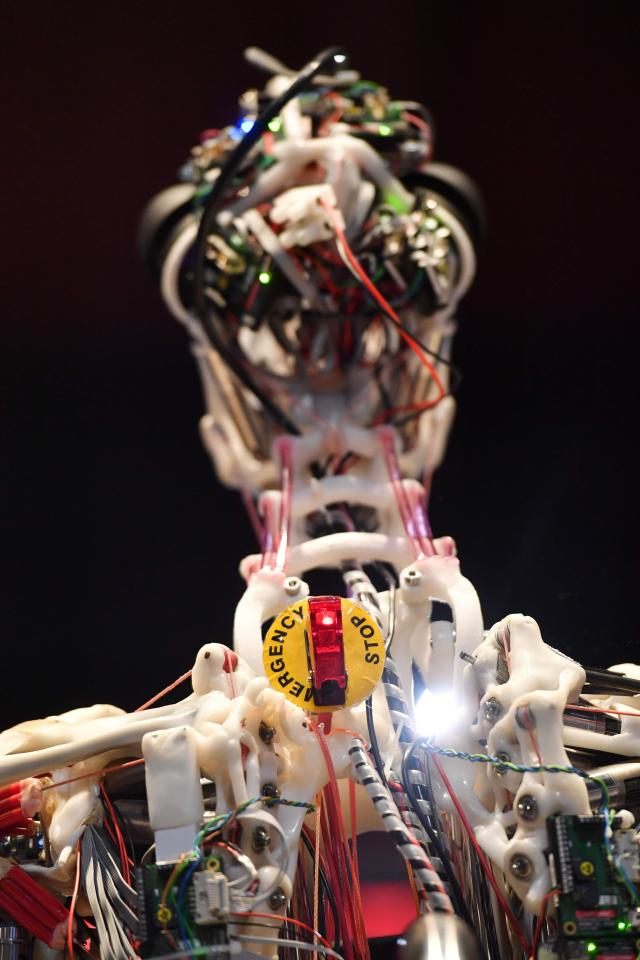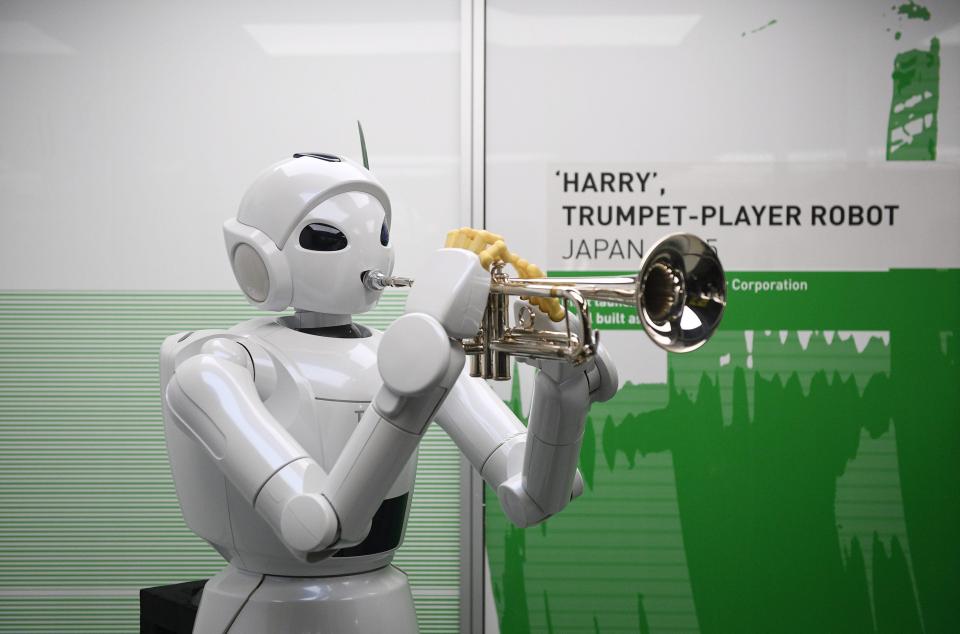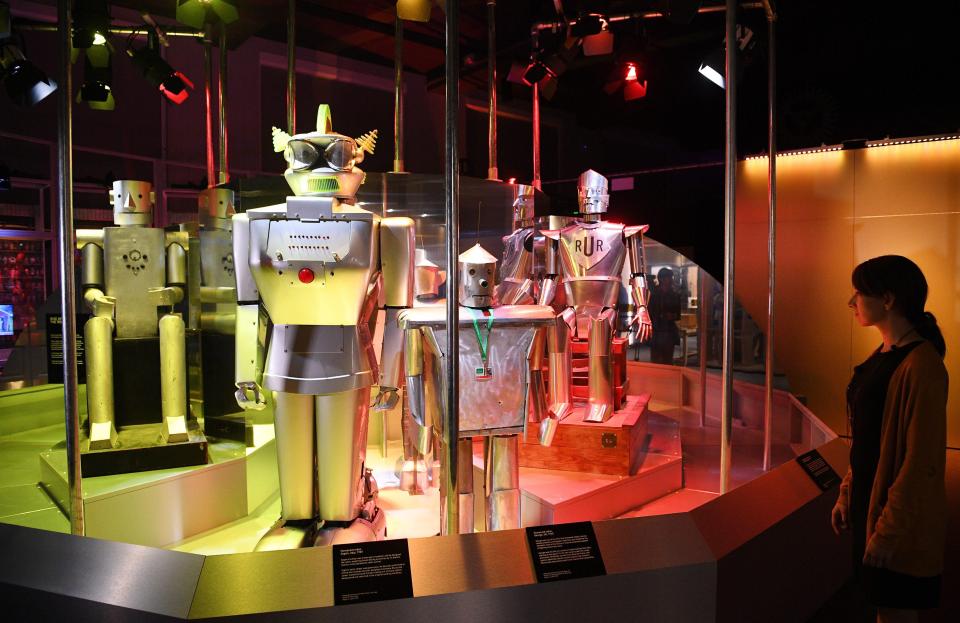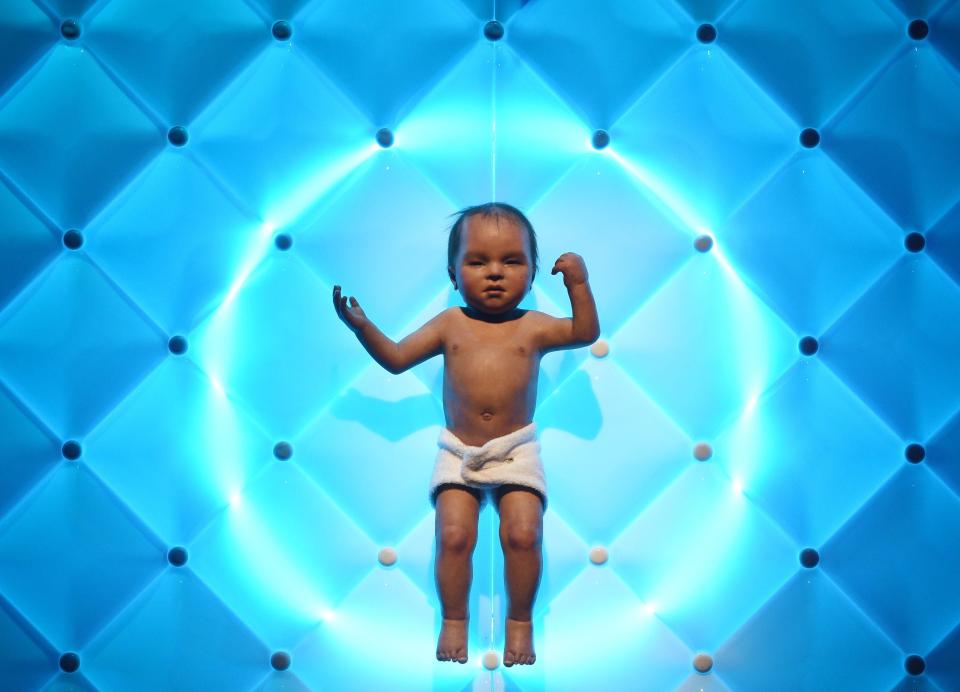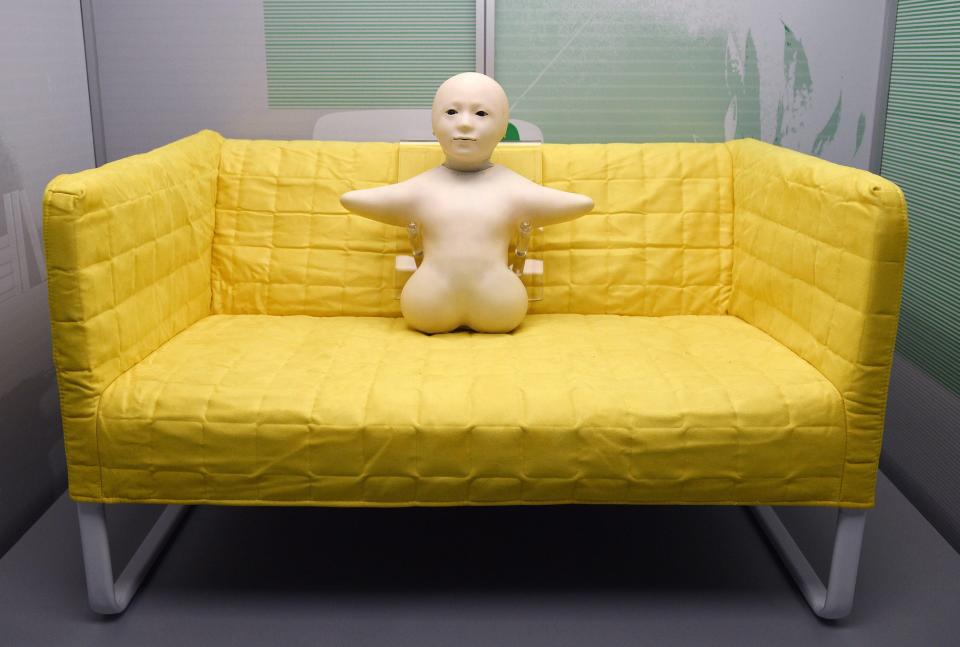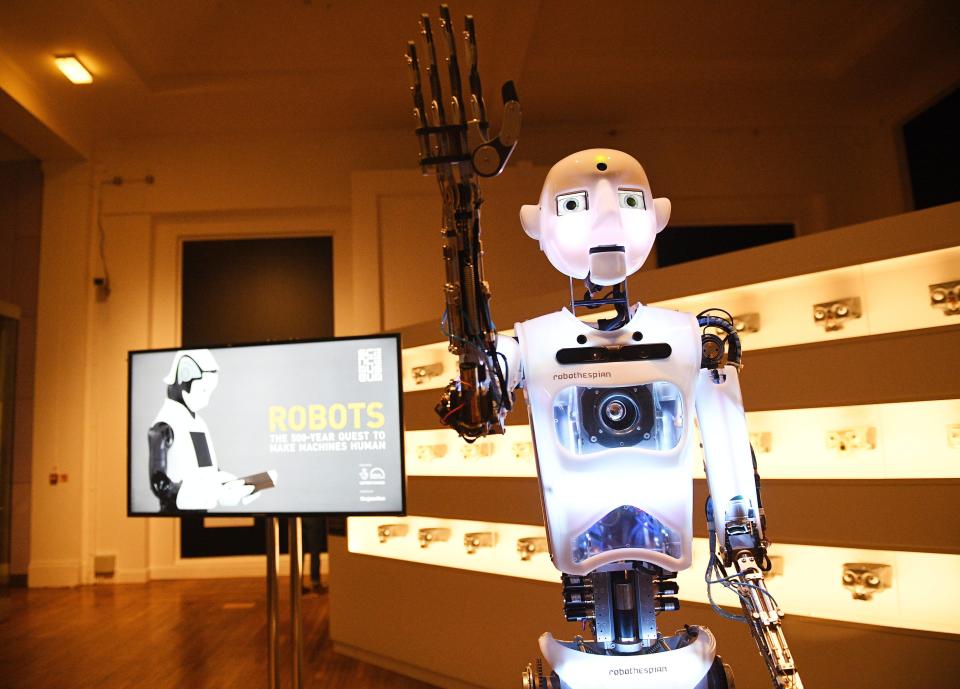Meet the stars of the Science Museum’s robot exhibition, from mechanical babies to silicon servants
Show reveals the machines which have been our servants for 500 years - but will they end up becoming our masters?

AN army of robots has invaded London's Science Museum on a mission to teach humans their 500-year-old history.
Opening on Wednesday, a major new exhibition explores humanity's centuries old quest to re-imagine people as moving, talking and thinking machines.
More than 100 robots are on display, ranging from a 16th century automaton monk to characters from science fiction films and research lab creations.
"Robots" explores the role played by humanised machines in religion, the industrial revolution, science and popular culture.
The first robot visitors to the exhibition will meet is a disconcertingly realistic human baby used in film making that can sneeze, breathe and move its arms and legs.
Others include the receptionist robot Inhka who answers questions and offers fashion advice,
Zeno R25 who can copy your facial expressions, and Rosa who turns her head to watch people passing by.
The uncannily life-like Kodomoroid, from Japan, reads robot-related news bulletins, while RoboThespian does vocal exercises and puts on a theatrical performance.
Another machine from Japan called the Telenoid is designed to make speaking on the phone more realistic by transmitting the voice of the person on the other end of the line and mimicking their movements.
Lead curator Ben Russell said: "Coming face to face with a mechanical human has always been a disconcerting experience.
"Over the centuries, each generation has experienced this afresh as new waves of technology heralded its own curiosity-inducing robots. That sense of unease, of something you cannot quite put your finger on, goes to the heart of our long relationship with robots."
The history of robots can be traced to early experiments with clockwork, such as a French astrolabe dating from around 1300 that is also on display the museum.
Such devices prompted ideas about the human body being a kind of machine, leading to the first robots. One of these was the automaton monk, built in around 1560 as an expression of religious faith.
Inventor Richard Greenhill's Shadow Biped, a 1980s attempt to build the world's first humanoid robot using wooden bones and air-powered muscles, is also featured.
Mr Greenhill, 73, from London, said: "I came up with the concept of the air muscle which powered the biped.
Related Stories
"To make my invention work, I went to a local department store's bridal section, where they sold gloves for bridesmaids featuring some netting that was perfect to go around my fledgling muscles. I bought dozens of pairs."
He went on to construct the shadow hand in the 1990s - at the time the world's most humanlike hand - which is also on show.
Mr Greenhill, a photographer who designed robots in his spare time, added: "I believed passionately - and still do - that robots may be the answer to many of the world's problems."
Science Museum director Ian Blatchford said: "Visitors to Robots will see the greatest collection of humanoids ever assembled.
"This stunning exhibition explores the fascinating question of why, rather than how, we build robots."
We pay for your stories! Do you have a story for The Sun Online news team? Email us at [email protected] or call 0207 782 4368




